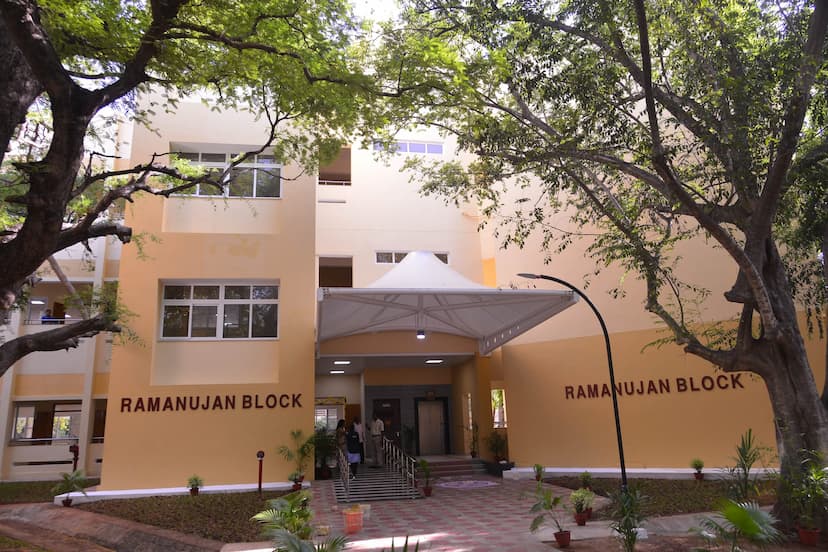Researchers at IITM work for improving great performance

Researchers at IITM (IIT Madras) have proved their mettle once again by developing strategies to improve braking performance of electrified vehicles.
Researchers at IITM who worked towards developing strategies for imporving braking performance are
Professor C.S. Shankar Ram of Department of Engineering Design at IIT Madras and his PhD student Dr. V.S. Kesavan.


The work of researchers at IITM could help implement a braking system in Electrified Vehicles, which can improve the stopping distance and ride comfort in the presence of regenerative braking.
The results of the study by researchers at IITM have been published in the reputed peer-reviewed Journal Vehicle System Dynamics.
Researchers at IITM work for improving great performance
Although such strategies have been developed for lighter road vehicles, there is a lack of strategies through which the braking performance of heavy commercial road vehicles (such as buses and trucks) can be improved through ‘regenerative braking,’ say researchers at IITM.

Professor Shankar said given the increasing adoption of electrified heavy road vehicles, it is imperative to study their dynamic response during on-road operation.
Brakes are used to ensure safe operation of vehicles, and this research focusses on the braking of electrified heavy road vehicles, he said.

Speaking further about braking system, researchers at IITM said there are two types – Friction Based Braking System and Regenerative Braking System.
Friction Based Braking system is where the drivers in conventional fossil fuel based heavy vehicles uses brake pedal to regulate a pneumatic system whose output force is used to stop the vehicle using friction braking, said researchers at IITM.
The kinetic energy of the vehicle due to its moving state is converted to heat energy.
Thus, a part of the energy obtained from burning the fuel is wasted in the form of heat energy dissipated during friction braking.


The regenerative braking does not turn sufficient in all conditions, said researchers at IITM.
When the battery is fully charged or when the speed of it goes down beyond a particular limit, regenerative braking is not available, total brake force has to be applied only through friction braking, said researchers at IITM.
Researchers at IITM said taking into consideration the above situation, both the braking systems – friction braking system and regenerative braking system must be used in a cooperative manner so that energy is also conserved and vehicle also stops within a reasonable distance.
Also read – Most toughest exams in India
If cooperative braking system is used, electrified vehicles could get the best of both the systems.
However, the question is how to ensure both the systems work efficiently so that vehicles stop within a reasonable distance with no jerks experienced during the shift between the two braking systems for good ride comfort, said researchers at IITM.
Professor C.S. Shankar Ram said due to the faster response of regenerative braking, its switch-off can cause momentary perturbations in vehicle’s deceleration and its associated vehicle dynamic parameters until the friction brake system increases its brake pressure to meet the desired brake demand from the driver.
This situation disturbs the driver’s brake feel momentary due to the difference in the dynamic response characteristics of these two braking systems, he said.
The researchers at IITM tried to understand what happens when both the braking systems are applied together in heavy vehicles.
Also, researchers at IITM evaluated how braking performance is affected when the regenerative brake is switched off instantaneously and gradually.
Researchers at IITM studied the effects of these strategies on both laden and unladen heavy road vehicles and considered two types of roads, i.e., dry and icy.
Various strategies were evaluated through appropriate experiments performed in a Hardware-in-Loop experimental setup equipped with ‘IPG TruckMaker’, a commercially-used vehicle dynamic simulation software.
What was the result? Researchers at IITM found out that on a dry road, use of both brake systems reduced the vehicle stopping distance by 2.1 m (about half a car’s length).
Researchers at IITM also found that when the regenerative braking was switched-off gradually, the effect of different dynamic characteristics of friction brake and regenerative brake reduces the percentage of momentary variation in the longitudinal deceleration by 80%.
In the pitch motion by 79%, in the suspension deflection by 87% and in the wheel slip ratio by 90% compared with instantaneous switch-off.
These provide better driver braking feel, ride comfort and vehicle stability.
Hence, the strategies developed by this study will ensure that one can get good ride comfort along with meeting desired brake demand and is therefore important for consideration by the electrified vehicle market.

Researchers at IITM expect that the vehicle dynamic performance during active braking control would improve due to smooth dynamic transition between friction braking and regenerative braking which would help in the appropriate design of active safety systems for electrified vehicles.
S Vishnu Sharmaa now works with collegechalo.com in the news team. His work involves writing articles related to the education sector in India with a keen focus on higher education issues. Journalism has always been a passion for him. He has more than 10 years of enriching experience with various media organizations like Eenadu, Webdunia, News Today, Infodea. He also has a strong interest in writing about defence and railway related issues.









